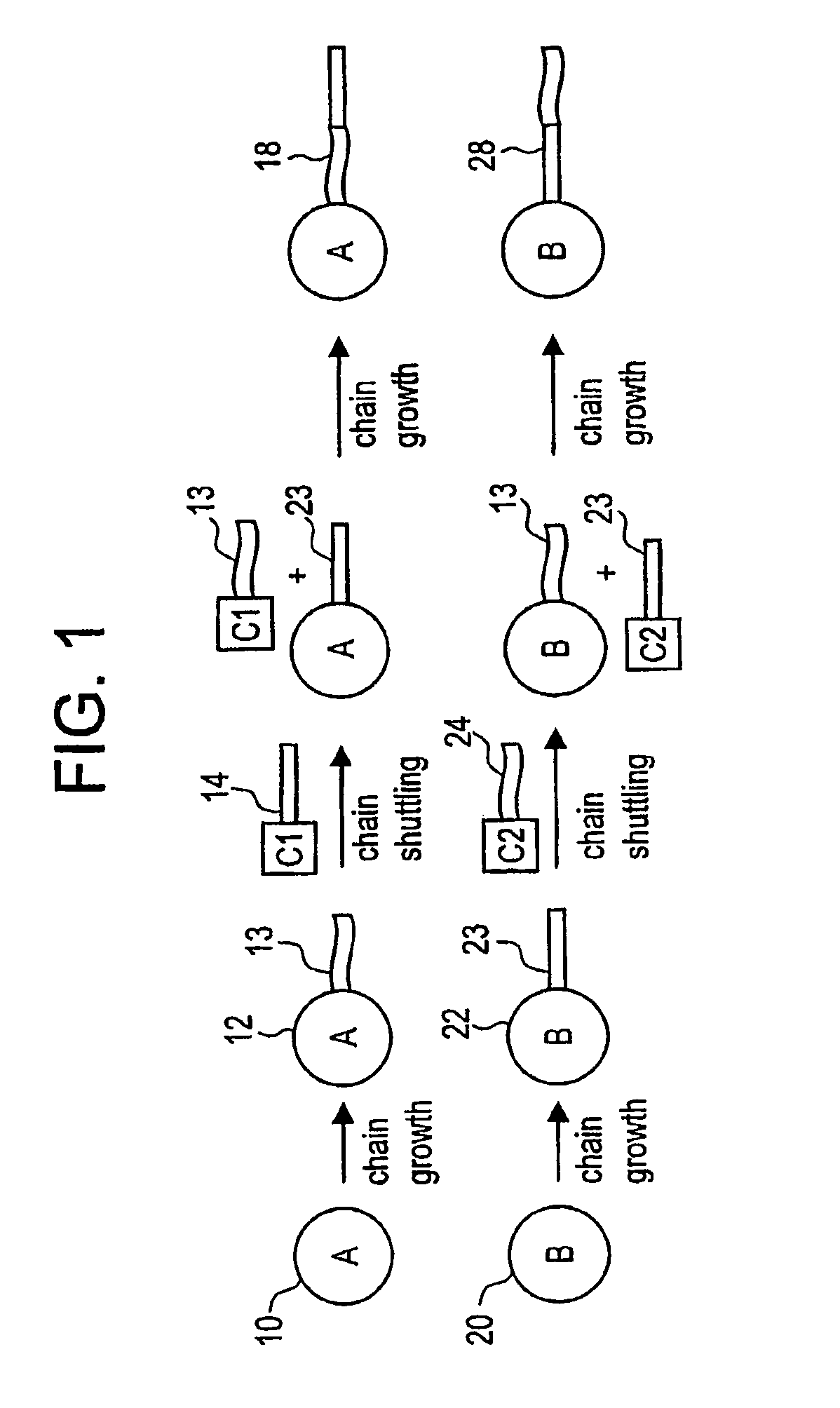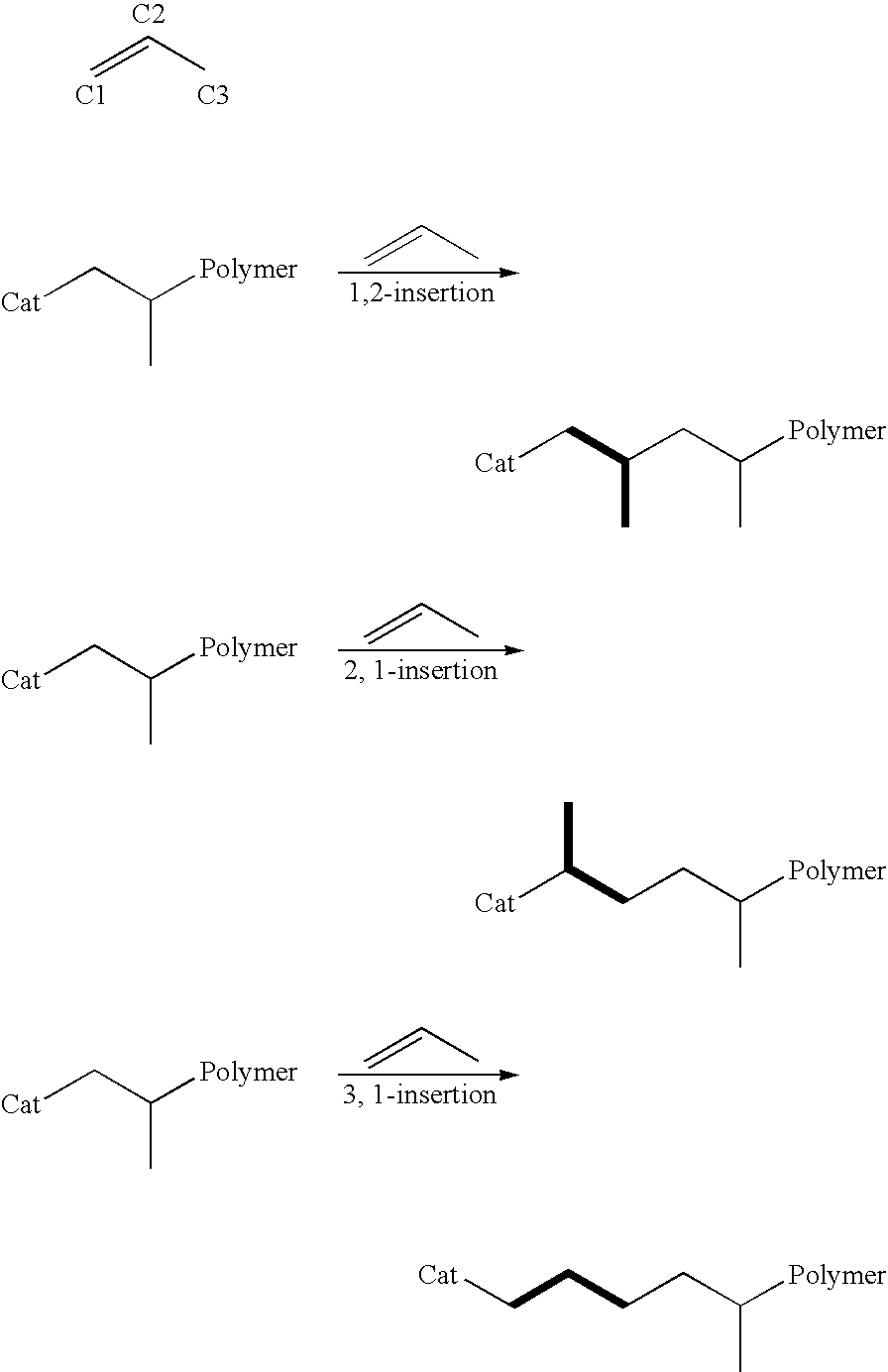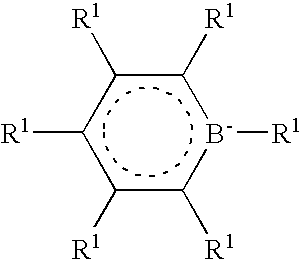Catalyst composition comprising shuttling agent for regio-irregular multi-block copolymer formation
a technology of regio-irregular and copolymer formation, which is applied in the direction of catalyst composition comprising shuttling agent for regioirregular multi-block copolymer formation, can solve the problems of poor process economics, limited monomer types that can be usefully employed in such methods, and low efficiency
- Summary
- Abstract
- Description
- Claims
- Application Information
AI Technical Summary
Benefits of technology
Problems solved by technology
Method used
Image
Examples
specific embodiments
[0583]The following specific embodiments of the invention and combinations thereof are especially desirable and hereby delineated in order to provide detailed disclosure for the appended claims.
[0584]1. A copolymer formed by polymerizing propylene, 4-methyl-1-pentene, or another C4-8 α-olefin in the presence of a composition comprising the admixture or reaction product resulting from combining:
[0585](A) a first olefin polymerization catalyst,
[0586](B) a second olefin polymerization catalyst capable of preparing a polymer having increased incidence of regio-irregular branching, preferably 2,1- and / or 3,1-monomer insertions, compared to the polymer prepared by catalyst (A) under equivalent polymerization conditions, and
[0587](C) a chain shuttling agent.
[0588]2. A copolymer formed by polymerizing propylene, 4-methyl-1-pentene, or another C4-8 α-olefin, and a copolymerizable comonomer in the presence of a composition comprising the admixture or reaction product resulting from combining:...
example 1
[0640]A vial is charged with Ligand (L1) (5.4 mM in toluene, 3.7 mL, 20 μmol) and (TMEDA)Ni(CH3)2 (5.4 mM in toluene, 3.7 mL, 20 μmol). After stirring for 5 minutes, catalyst (A1) (4 mM in toluene, 1.0 mL, 4.0 μmol) is added. This mixture is then added to a bottle containing a stirred solution of 4-methyl-1-pentene (3 mL), cocatalyst 1 (4 μmol), and DEZ (1.0 mmol) in toluene (10 mL). The reaction is stirred at 20° C. for 2 hours at which time it is quenched by addition of water. The organic layer is evaporated to yield polymer. GPC reveals a single peak with Mw / Mn<2. DSC reveals a melting point greater than 200° C. and a Tg less than −30° C.
example 2
[0641]A vial is charged with catalyst (B2) (5.4 mM in toluene, 1.11 mL, 5.9 μmol), and catalyst (A1) (4 mM in toluene, 1.0 mL, 4.0 μmol). This mixture is then added to a bottle containing a stirred solution of 4-methyl-1-pentene (3 mL), cocatalyst 1 (10.0 μmol), and DEZ (1.0 mmol) in toluene (10 mL). The reaction is stirred at 20° C. for 2 hours at which time it is quenched by addition of water. The organic layer is evaporated to yield polymer. GPC reveals a single peak with Mw / Mn<2. DSC reveals a melting point greater than 200° C. and a Tg less than −30° C.
PUM
| Property | Measurement | Unit |
|---|---|---|
| molecular weight distribution | aaaaa | aaaaa |
| molecular weight distribution | aaaaa | aaaaa |
| molecular weight distribution | aaaaa | aaaaa |
Abstract
Description
Claims
Application Information
 Login to View More
Login to View More - R&D
- Intellectual Property
- Life Sciences
- Materials
- Tech Scout
- Unparalleled Data Quality
- Higher Quality Content
- 60% Fewer Hallucinations
Browse by: Latest US Patents, China's latest patents, Technical Efficacy Thesaurus, Application Domain, Technology Topic, Popular Technical Reports.
© 2025 PatSnap. All rights reserved.Legal|Privacy policy|Modern Slavery Act Transparency Statement|Sitemap|About US| Contact US: help@patsnap.com



